Your cart is currently empty!
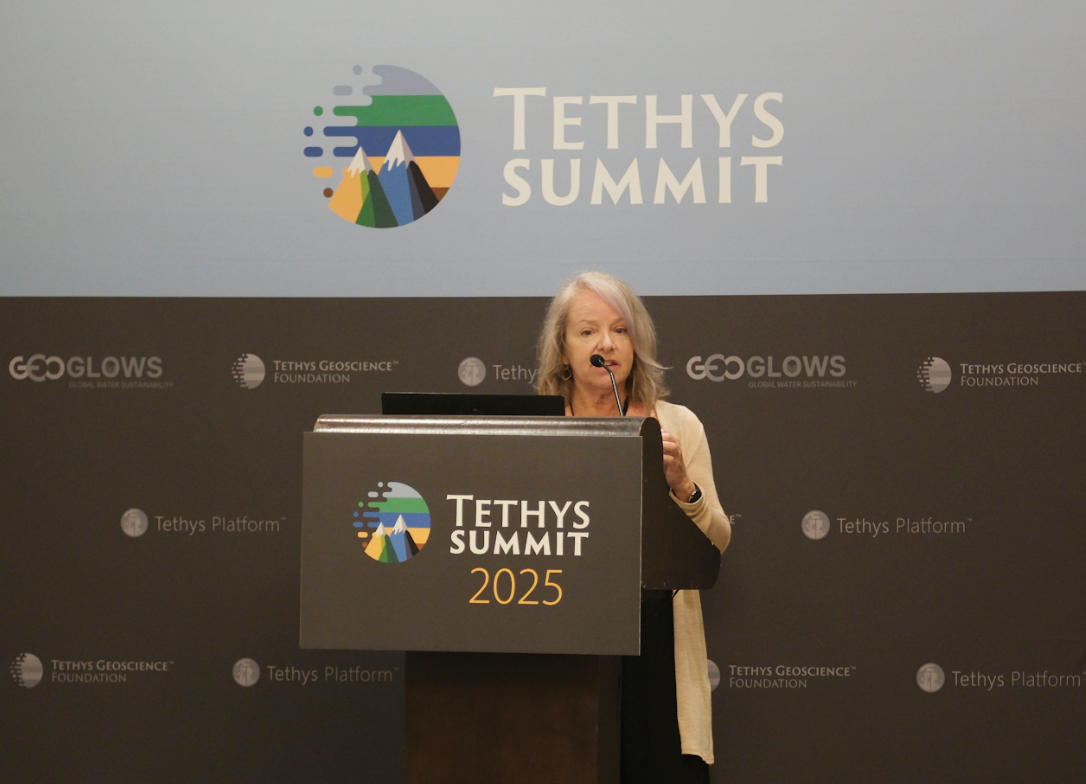
Tethys Summit 2025: Day One Highlights
—
The inaugural Tethys Summit is off to a wonderful start here at The Westshore Grand in Tampa, Florida, bringing together our vibrant Tethys community for what’s already proving to be an inspiring exchange of ideas, innovations, and connections. From longtime platform members to curious newcomers, educators to researchers, developers to decision-makers, the diverse group gathered here represents the collaborative spirit that makes this community so special.
Setting the Foundation
Sunday night kicked off Tethys Summit with the welcoming reception. Gathering researchers and developers from around the world, we met in person to share ideas. It was great to meet in person, many for the first time, to create an atmosphere of collaboration and community for the event.
Monday morning kicked off with the essential “State of” talks in the Bayshore III room, providing crucial context for the days ahead. Katherine Moore Powell started the opening session with perspectives on the Tethys Geoscience Foundation’s mission, growth, and commitment to amplifying Earth science impact through community collaboration. Nathan Swain, Chair of the Board of Directors for the Tethys Geoscience Foundation, offered insights into the current state and future direction of the Tethys Platform, highlighting how it has grown over 10 years to become a medium for getting real geoscience information out to those who need it. Michael Souffrant followed with comprehensive updates on GEOGLOWS initiatives, showcasing how the program continues to advance global water sustainability through open forecasting systems that are improving lives world-wide.
Research Applications in Action
The morning plenary sessions showcased the practical power of these platforms across diverse environmental domains. Osama Tarabih from the University of South Florida presented HydroModelMatch, demonstrating how Tethys can streamline watershed and waterbody model selection processes. Ashim Khanal, also from USF, followed with AquaNutriOpt, a decision support tool for watershed nutrient management that exemplifies the platform’s capacity for addressing complex environmental challenges.
Jiangtao Liu from Penn State showcased the platform’s data visualization capabilities through interactive exploration of high-resolution streamflow data, while Prabin Sharma from the University at Albany demonstrated how Tethys can enhance early warning systems through climate-informed social vulnerability assessments. The range of applications highlighted the platform’s versatility and the creativity of its user community in addressing real-world problems.
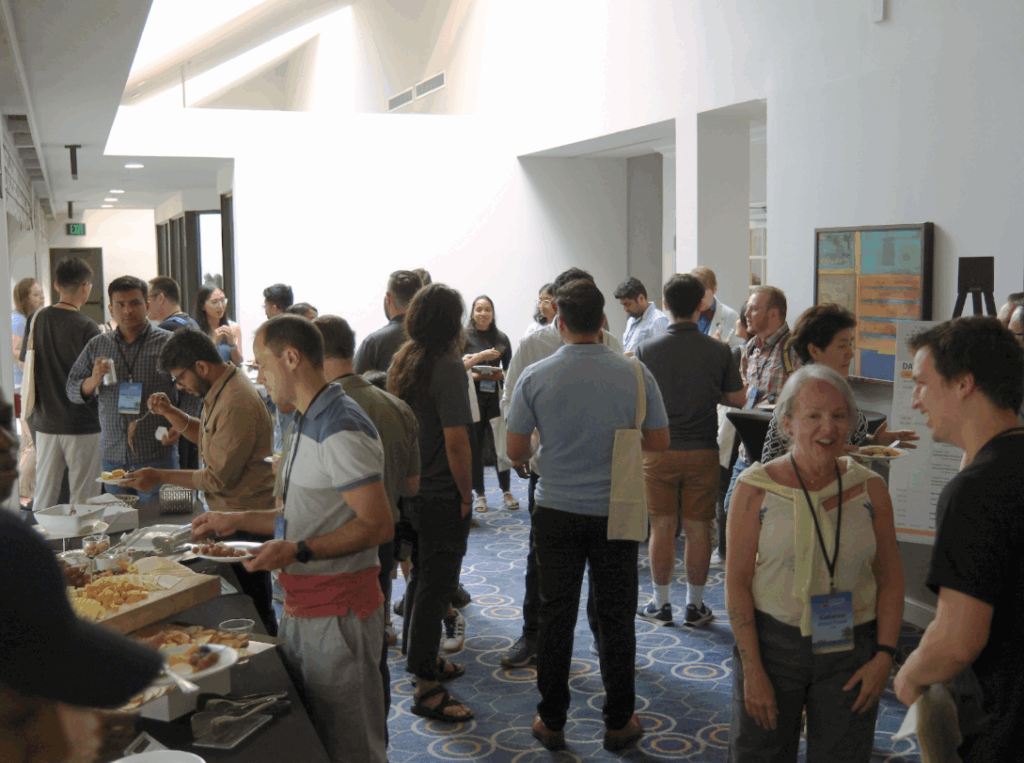
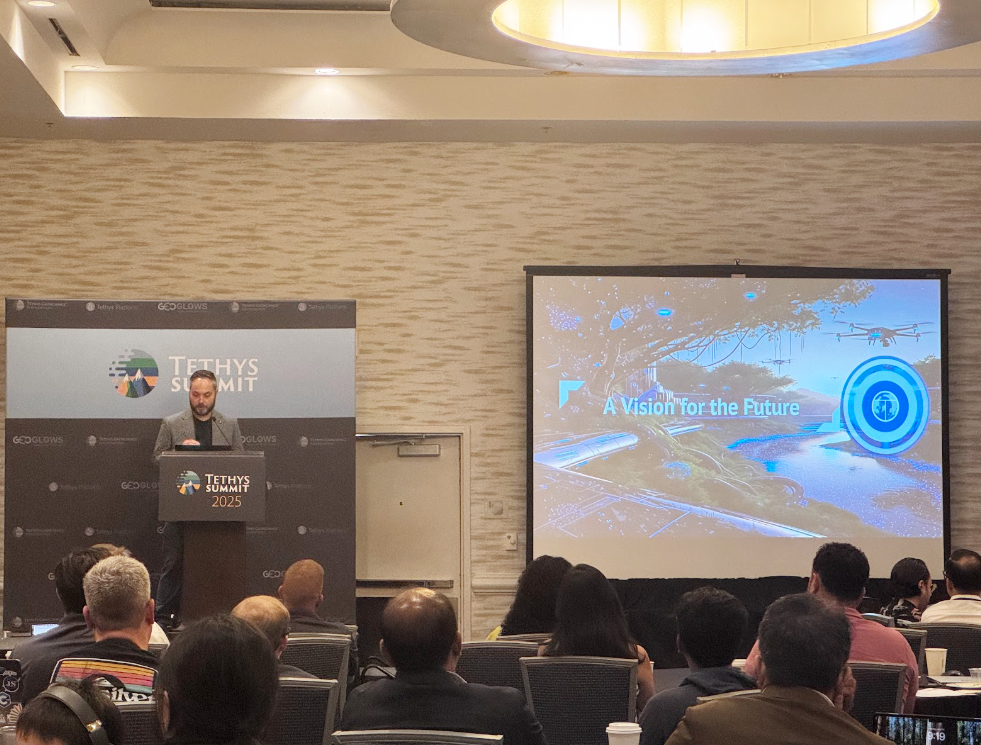
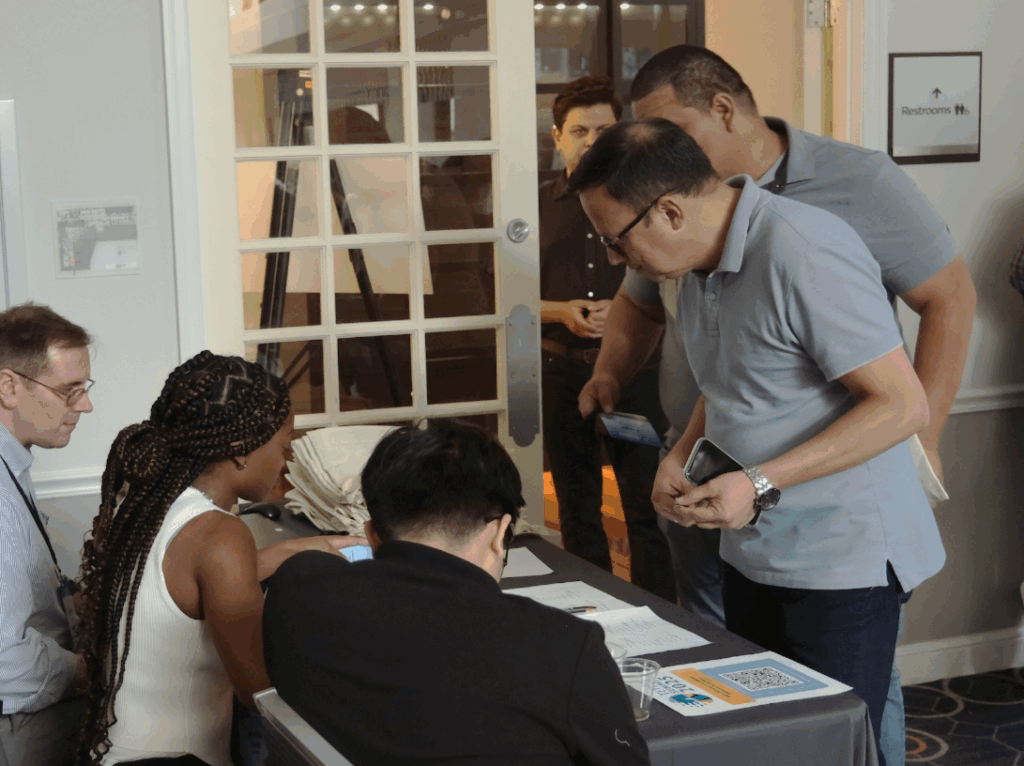
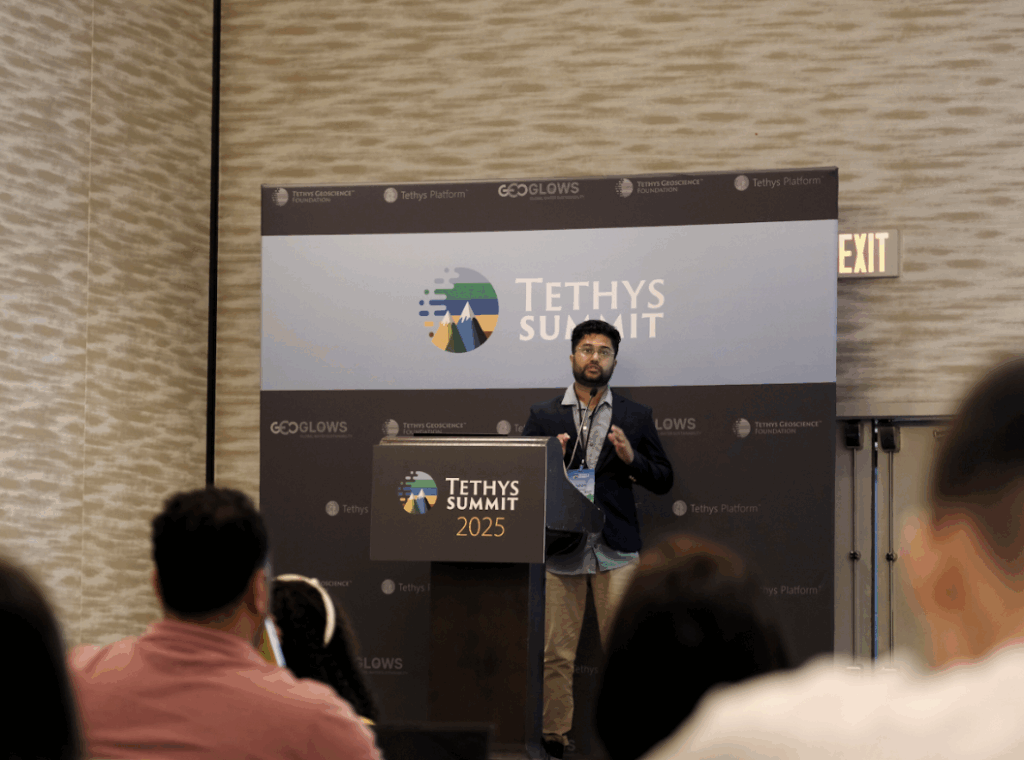
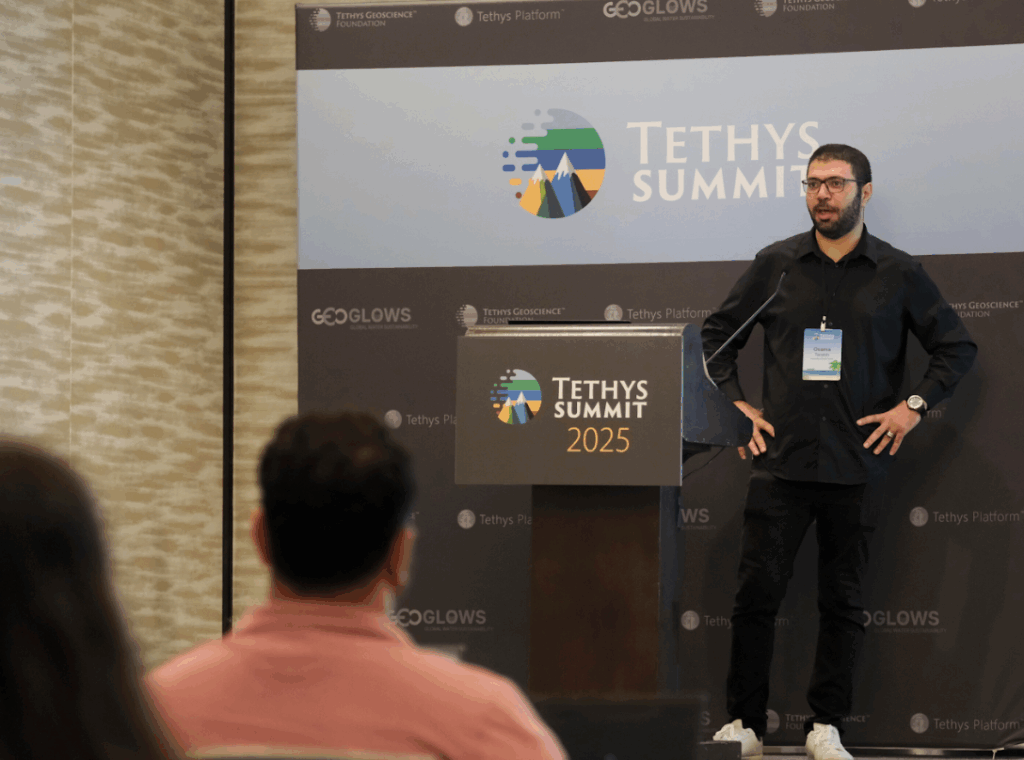
Multiple Learning Pathways
The afternoon brought the launch of three parallel tracks, each carefully designed to cater to different experience levels and professional interests. The Cutting Edge track, featuring Tethys Dash with Corey Krewson, explored advanced features and development techniques for experienced users looking to push the platform’s boundaries. Meanwhile, the Platform Essentials sessions, led by Jianting Shi and Tasfia Mahjarin, provided solid foundational knowledge for newcomers and those seeking to strengthen their core understanding of Tethys development.
The Data and Services track proved popular among attendees interested in data integration, featuring comprehensive sessions on GEOGLOWS led by Jorge Sanchez-Lozano. Attendees were able to tailor their learning experience based on their specific needs, technical background, and professional interests, creating more focused and productive sessions throughout the afternoon.
Later workshops explored the uses of Tethys. Dan Ames demonstrated ways that CIROH NWM data services and tools can expedite the distribution of data to those who need it most. Shawn Crawley explored the features of Tethys Dash. Finally, Nathan Swain reviewed the many ways that you can contribute to the open-source Tethys Platform.
Innovation in Development
Running alongside the formal sessions, the app contest development sessions generated enthusiasm throughout the day. Attendees showed up ready to build and develop new apps. Using the breakout rooms, foyers, and anywhere else, we both started new apps and continued refining existing apps making use of the chance to collaborate. Participants are continuing to work individually and in teams to create innovative solutions. Some will be showcased during today’s award banquet and other apps will continue to be developed to add to the growing portfolio of Tethys applications.
Looking Into Day Two
As we continue into Tuesday, anticipation is building for the keynote presentations from three distinguished speakers. Angelica Gutierrez, Program Director for GEOGLOWS and Lead Hydrologist at NOAA, brings extensive experience in operational water forecasting systems. Kiran Shakya, Geospatial Application Development Specialist at ICIMOD, will share insights from establishing NASA-USAID SERVIR-Himalaya infrastructure. Dan Ames from BYU, a key figure in the Tethys Platform’s development and current Treasurer of the foundation, rounds out the keynote lineup with his perspectives on the platform’s evolution and future directions.
Tuesday’s plenary sessions promise to maintain the high quality established on day one, with presentations covering spatial metadata tools, cloud-based geoscience data systems, educational applications, and international water management initiatives.
Community Connection and Collaboration
Beyond the technical content, the summit continues to fulfill our primary goal of strengthening connections within Earth science and development communities. The international representation underscores the global reach and relevance of these open-source platforms.
The summit continues forward with a promise of showcasing the intersection of innovation, collaboration, and real-world environmental impact. With presentations ranging from educational applications at community colleges to international flood management systems, the event demonstrates how open-source tools can address challenges at every scale, from local watersheds to global water sustainability.
The combination of technical depth, practical applications, and community building that has characterized day one bodes well for the remainder of the summit. As participants prepare for the rest of today’s sessions and the evening’s award ceremony, the inaugural Tethys Summit is establishing itself as a valuable forum for advancing open-source innovation in Earth science.
More updates to follow as the summit continues!

Leave a Reply